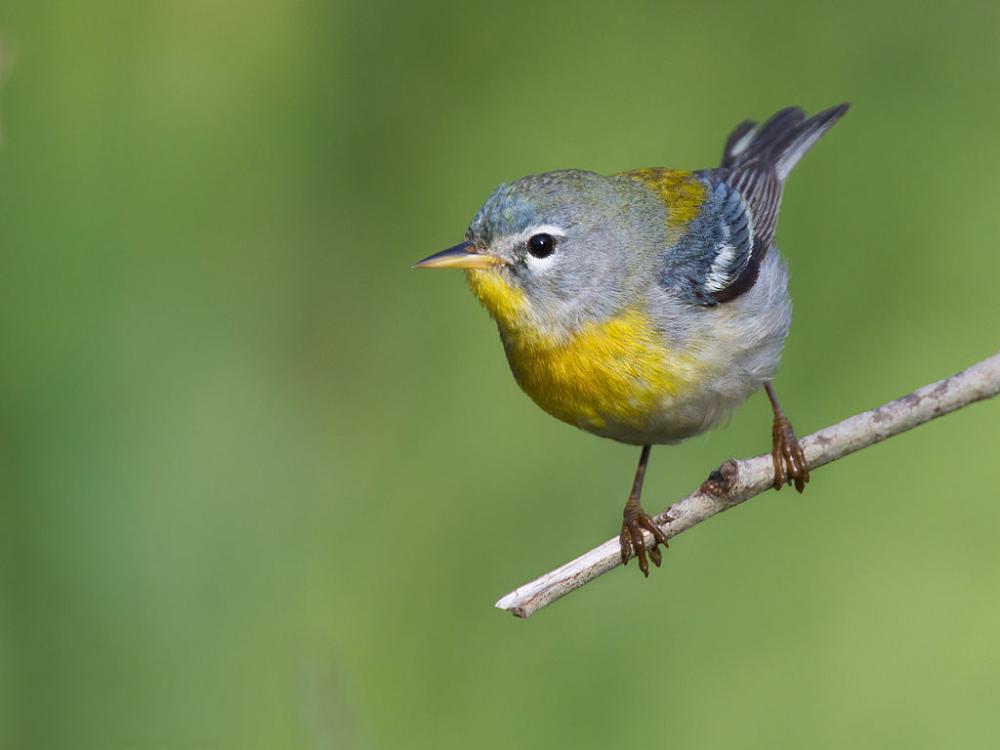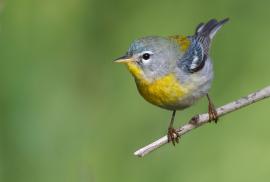Guide to Boreal Birds
Overview
This species is almost entirely dependent upon either Spanish moss or "beard moss" for nest sites. Although they breed mostly in coniferous forests in the North, during migration these birds also frequent deciduous trees and shrubs. In spring they are commonly seen in trees along roadsides, and in parks, yards, orchards, and gardens as well as woods.
Description
4 1/2" (11 cm). A small warbler; blue above with yellow-green "saddle" on its back, yellow throat and breast, and white belly; 2 white wing bars. Male has orange-brown chest band.
Voice
1 or more rising buzzy notes dropping abruptly at the end, bzzzzz-zip or bz-bz-bz-zip.
Nesting
4 or 5 brown-spotted white eggs in a woven basket-shaped nest of grass, bark, and vegetable fibers-neatly hidden in Spanish moss in the South, in "beard moss" or Usnea lichen in the North.
Habitat
Breeds in wet, chiefly coniferous woods, in swamps, and along lakes and ponds; more widespread during migration.
Range/Migration
The Northern Parula has one of the most prolonged migrations of any North American warbler. Significant numbers of this species appear along the Texas coast in late February, and continue to move northward through this region through May. Northern breeders passing through the southern states in May are crossing paths with local birds that have already fledged young. The Northern Parula is quite common in winter in all parts of the West Indies; the species is also found in eastern Central America, although it is not abundant anywhere on the mainland. This is one of the few warblers that moves up the Atlantic coast in significant numbers during the spring migration.
Breeds from southeastern Canada to Gulf Coast. Winters from southern Florida southward into tropics.



